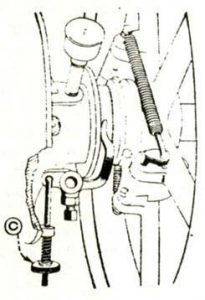I first learned about the Atkinson engine in a catalog of a book by Vincent R. Gingerly called Building the Atkinson Differential Engine. The Atkinson differential engine was developed by James Atkinson in England in 1882. At the time, Nikolaus Otto had full patent control for the 4-stroke engine design we all know about today. Atkinson knew that Otto’s design was not very efficient, and designed an engine that included all four strokes in one turn of the crankshaft instead of two, and all the strokes were all a different length. This is the Atkinson differential engine.
This first engine design was not commercially successful. A few years later, in 1887, Atkinson designed another engine called the Atkinson cycle engine, which was a much better and more commercially successful design, featuring intake and compression strokes that were shorter than the expansion and exhaust strokes. In fact, Toyota uses this concept in their cars and trucks today, using a computer to control the valves to mimic the Atkinson cycle engine.
Building the Atkinson
I was so intrigued by the differential design that I ordered Gingerly’s book. The book is about building a model of the engine, but I wanted to build a full-sized replica to see if it would run. In the book were the 1886 U.S. patent drawings, with one front and one side view.
I found a flywheel that looked just like the one in the patent drawing (it came off of a line shaft) that is 28 inches in diameter. With that diameter and the measured flywheel diameter of the patent drawing, I could extrapolate a number to multiply all measurements (taken with a dial caliper) from the patent drawing to obtain the size of the full-size part.
I first built the base and crankshaft, then assembled those with the flywheel. Because I didn’t know how this engine worked, and I didn’t know how accurate the patent drawing was, I made a mockup using wood connecting arms and a trough made of wood for the piston to slide in just to see what was happening with this whole thing. The first time I turned the flywheel and saw what the pistons were doing I was amazed that anyone could come up with an idea like this. Atkinson called the piston on the left, as you look at the engine, the pump piston (for intake and exhaust). The right side piston is the working piston (for compression and power/expansion). With that knowledge, I figured the engine might run, so I began building the hard parts, like the cylinder, the connecting arms, and the intake and exhaust blocks.
The cylinder wasn’t the hardest part to build, but one of the most intricate. The water jacket, intake and exhaust, and spark plug bosses, just required basic welding and machining skills. It just took time. The hardest parts to build were the connecting arms. They are both different in shape. The bottoms line up with the center of the cylinder, while the tops of the arms are offset to one another so the bearings will fit on the crankshaft. I made the arms out of steel and had to bend the offset on a press. It took a little time to get the offset right and not twisted. After that was done I machined the crank and upper arm journal.
The next parts I built were the upper connecting rods. I made them adjustable to begin with because I didn’t know how long they needed to be. Then I built the lower piston connecting rods the same way, adjustable for length. I bored the cylinder to fit the pistons and assembled all the parts I had. I turned the engine over slowly by hand to make sure the pistons didn’t hit each other. All was good. The patent drawing was accurate so far. Amazing.
The next parts to build were the intake and exhaust blocks. Both of the valves operate atmospherically. That is to say, they open by the pressure difference between the inside of the cylinder and the outside atmosphere. The exhaust valve is out of a Mitsubishi car engine that I machined to fit. The intake I made out of aluminum for lightness. The cylinders are ported, and the valves are above the ports.
The 1886 engine had a hot tube ignition, but I used a spark plug ignition system as I figured I would have better control of the timing. I built a plate to mount the points on and made it to pivot around the crankshaft for adjustment. I machined a flat spot on the crankshaft to open and close the points. I found a sweet spot for the timing, and it wasn’t where I thought it would be. On this type of engine the power stroke only pushes for a quarter turn of the crankshaft. The timing ended up being much more retarded than I thought it would be. It does work, though. The mixer I built works, but I want to build one that lets me control the air-fuel ratio better.
Running the Atkinson
Once I had the valve blocks installed on the engine, I plumbed some acetylene to the intake port, hooked my ignition to a battery and turned the flywheel. Nothing happened. I turned the flywheel again, and to my complete amazement, the engine started to run. With that encouragement I built a mixer, a water tank, and installed the oilers. After that first run it took me three months to figure out how to get it started again. It runs faster than I expected, at maybe 400rpm. This then is my full-size replica of Atkinson’s differential engine.













